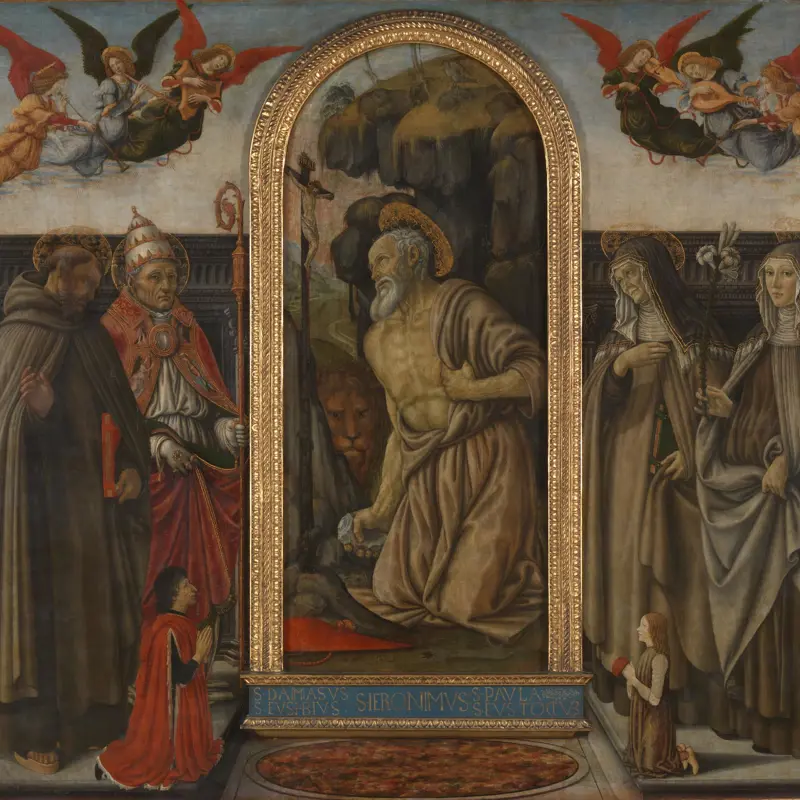Possibly by Francesco Botticini, 'The Crucifixion', about 1471
About the work
Overview
Christ is shown nailed to the Cross at his crucifixion, flanked by the two thieves who were crucified alongside him. His mother, the Virgin Mary, and his disciple John (known as the beloved disciple) stand at the foot of the Cross.
The panel comes from the predella, which was the lowest part of an altarpiece and usually formed of individual narrative scenes. Several others from the same series, depicting the events leading up to Christ’s death, have been identified but we do not know to which altarpiece they belonged.
The picture was once thought to be by the Florentine painter Andrea Castagno, who trained the Pollaiulolo brothers, Antonio and Piero. The broad landscape background – which has darkened over time – with a winding path or river can be found in paintings by Piero and Antonio. More recently the picture has been connected with their Florentine contemporary, Botticini, who developed this type of landscape painting to grandest effect in his altarpiece of the Assumption of the Virgin, also in the National Gallery’s collection.
Key facts
Details
- Full title
- The Crucifixion
- Artist
- Possibly by Francesco Botticini
- Artist dates
- about 1446 - 1497
- Date made
- about 1471
- Medium and support
- egg tempera on wood
- Dimensions
- 28.5 × 35 cm
- Acquisition credit
- Bought, 1883
- Inventory number
- NG1138
- Location
- Not on display
- Collection
- Main Collection
- Previous owners
Provenance
Additional information
Text extracted from the ‘Provenance’ section of the catalogue entry in Martin Davies, ‘National Gallery Catalogues: The Earlier Italian Schools’, London 1986; for further information, see the full catalogue entry.
Exhibition history
-
2011Devotion by Design: Italian Altarpieces before 1500The National Gallery (London)6 July 2011 - 2 October 2011
-
2015Visions of Paradise: Botticini's Palmieri AltarpieceThe National Gallery (London)4 November 2015 - 14 February 2016
Bibliography
-
1951Davies, Martin, National Gallery Catalogues: The Earlier Italian Schools, London 1951
-
1986Davies, Martin, National Gallery Catalogues: The Earlier Italian Schools, revised edn, London 1986
-
2001
C. Baker and T. Henry, The National Gallery: Complete Illustrated Catalogue, London 2001
About this record
If you know more about this work or have spotted an error, please contact us. Please note that exhibition histories are listed from 2009 onwards. Bibliographies may not be complete; more comprehensive information is available in the National Gallery Library.




